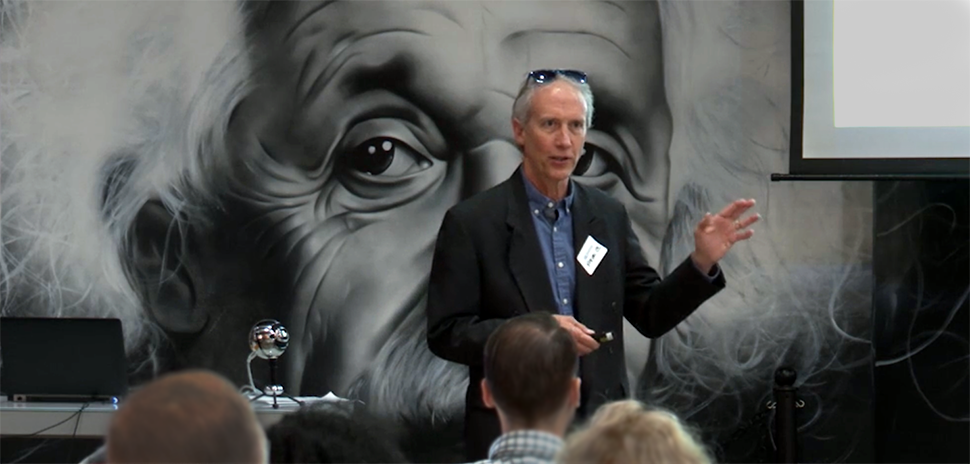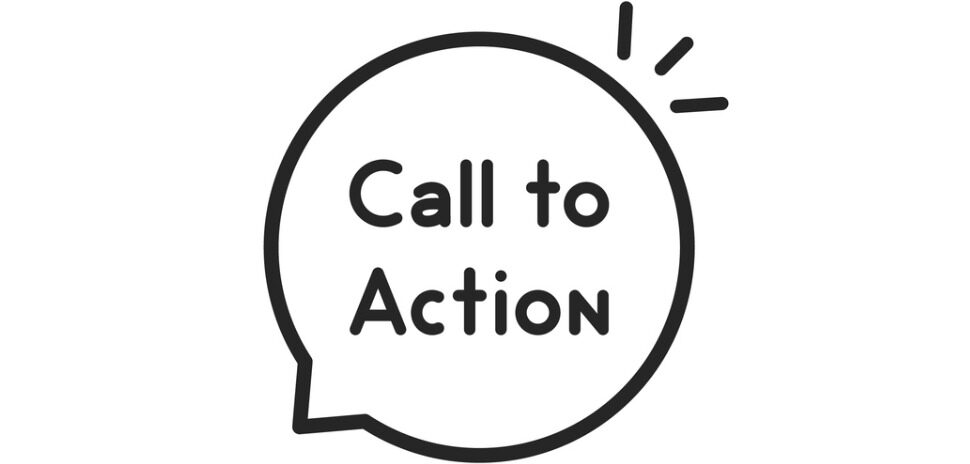A Dallas Innovates Series
Economist Bart van Ark led a conversation about the future of innovation with Fortune 1000 leaders from Microsoft, IBM, Sabre, and Blue Cross Blue Shield at the Signposts of Innovation panel discussion Oct. 3 at the Dallas Regional Chamber offices in Dallas. Panelist talked about ways that companies can create a culture of creativity. Van Ark is in charge of strategy development and new initiatives at The Conference Board, and heads a team of more than 20 economists in New York, Brussels, and Beijing.
Signposts of Innovation panelists were Cindy O’Shea of IBM, Mark McSpadden from Sabre, Bart van Ark of The Conference Board, Lane Sorgen of Microsoft, and Dr. Paul Hain of Blue Cross Blue Shield. Here is Part 2 of our series on the discussion.
Barriers to innovation
To start this part of the panel discussion, moderator Bart van Ark asked audience members to use an app to rank barriers to innovation that were presented on the screen and discussed the findings below.
Audience Flash Poll Results
1. Lack of time for innovation projects. The first one we see is barriers of innovation within your own company is lack of time for innovation projects. Roughly 71 percent of you picked that as one of the three of your most important challenges.
2. Lack of financial resources for the innovation process. Do we dedicate enough resources to it?
3. Fear of disruption of regular business processes. This is really about being worried that if you innovate too much, you’re just messing up our day-to-day business process and we’re afraid of doing that.
4. Lack of incentives to inspire or reward innovation. So, we don’t really incentivize our people to do this.
5. The next three are about the same. Company culture is too risk adverse…fear of disrupting regular business processes.
Bart van Ark: I’m going to ask each of you to reflect on this … Does this make sense in your mind? How do you see it in your own company? Have you tried to overcome this? What did you do?
Bart van Ark: How are you trying to track if you’re doing better or worse than some of those challenges?
Dr. Paul Hain: Yes, that’s really a metaphor for life. I don’t have time to address that … Internally, that becomes a large barrier and it’s difficult to overcome, especially when you are in a highly competitive space and you’re allocating your resources. Immediately, on your allocated time — I really like the IBM commercial.
But, how do you allocate time? How do you get time to execute, and how do you get past 1,000 leads of “no?” I’m going to tell a story and you’re going to have to deal with it.
I’m going to tell a story and you’re going to have to deal with it.
Before I went to medical school, I was an oil patch engineer in Alaska, and I worked on a flow station. At one point, we figured out that we were trying to lay chemicals down on the inside of a pipe wall. It was a long pipe. We thought, oh, you know what would be really smart is if we had somebody that would just slowly let off chemicals. We bought 30,000 pounds of Knox gelatin, and we solidified it with chemicals. Then we slid it into the pipeline and launched it down the pipe to slowly melt along the way and leave chemicals everywhere. Brilliant…we thought.
We bought 30,000 pounds of Knox gelatin, and we solidified it with chemicals. Then we slid it into the pipeline and launched it down the pipe to slowly melt along the way and leave chemicals everywhere. Brilliant…we thought.
Brilliant…we thought.
The point of this story is not how it turned out, because what we ended up doing was hitting that Jell-O pit into the float station, which then bound all the oil and water together, and we took down the whole flow station. It only cost like $10 million.
The point is that we were allowed to think of things and then act upon them, which was wonderful for innovation. That’s probably why so many folks, including us, IBM, and everyone here, are putting together our heads, putting together innovation centers because you get the best of both.
You have a safe space, but a controlled environment so you can’t wreck the whole flow station, right?
That’s probably the idea behind these innovation centers where you give time and you specifically have money, because otherwise why would a center be there if you don’t have time and money to be in it? You also have a controlled environment in which to run it.
So, those are very reasonable barriers. They can be hard to overcome, and you can see these are some of the ways that some large corporations are trying to overcome.
Cindy O’Shea: That’s a tough story to follow. Certainly, from an innovation center, that’s very important. Co-creating with our clients is very important as well.
One of the values from an IBM perspective about our culture is treasuring the “wild ducks.” So, how do you measure that — what wild ducks are? How do you reward clearly put innovation? How about rewarding failure?
We are risking first, for the most part, and I think it’s important to have failure because that’s how you learn. Fail fast, fail often, fail quickly.
Bart van Ark: Some say we’re just going to dedicate people’s time, [perhaps] 10 percent of your time: You can do innovation. It doesn’t matter what.
Bart van Ark: Is that something that some of you have experimented with in your organization or do you have another way of going about it?
Cindy O’Shea: The way we have been going about it is … the collaborative approach. It’s really looking at the user, building empathy maps, and that has fostered a lot of great innovation, as well as the agile methodology.
Dr. Paul Hain: That’s probably why we’re creating an innovation center because we have recognized the need for dedicated time and money.
Mark McSpadden: So, Datacom teams for sure do this. We’ve also done the hack day thing. We’ve done the pitch day thing where you do a pitch on business processes as well.
I think what people reflect on when they say they don’t have time for innovation projects…it’s not starting the project. It’s not getting people excited about the project. It’s actually [in] finishing the project that you find less and less supporters as you go down the path. That’s the real struggle: finishing.
You hear a lot of talk about self-starters: I need people [who] can get themselves going. No, I need people [who] can actually finish this thing.
Bart van Ark: So, why?
Mark McSpadden: Because usually, you’re taking money away from another piece of business when you’re trying to finish…when you say, hey, I actually need this chunk of money.
Bart van Ark: And you’re not immediately making money on the project.
Mark McSpadden: That’s correct. And you get people to help support you, but when it comes down to sitting in that room and saying, “Wait, I know if I put this dollar here, I know what the return is, and you’re asking for this dollar here that we think could maybe be a return.” That’s where there’s a lot of challenge.
Lane Sorgen: I think I’ll answer that question first. I think the reason it’s hard to finish things is because most things that need to be finished have already run up the budget. And so, you’ve got people inside any organization whose rewards and recognition are going to encourage them to not support that. So, it would actually be a new budget.
It’s also really hard to get new money to go toward finishing old stuff. I think that’s ultimately the biggest problem with that.
I’m going to hit on a couple of these real quick. The top one: the lack of time…just from a point of experience.
I said we are better at innovation now than we were, say, three years ago. I would call this out as the main issue.
In the change of our CEOs, one of the things that Satya (Nadella) put in place is he decided that previously, we had four presidents and each president ran their own business, completely. He actually told them one time that if he had one-on-one with one of his presidents, it was probably because something was wrong with the business.
They actually literally never met to talk about product [inaudible word].
If anybody knows anything about Microsoft, you know that there’s some stuff that’s connected, if you will, between Office and Windows, just as a simple example.
What Satya did is he said we are not going to innovate that way. We were missing deadlines. We weren’t innovating. We weren’t bringing things to market fast enough, so Satya instituted a weekly meeting between all of the leaders in the company … think about a strategic meeting with the CEO and the top 10 people in the company. It was very tactical, and they talked about what they’re doing in terms of innovation.
The reason I bring this up is, at least to my surprise, there was an awful lot of resources that we pulled from the other groups that would help, so we actually had [more time to finish] than we thought … That does innovate change in the culture when help is on the ground.
Bart van Ark: So, I just wanted to scroll down a little bit … Lack of support from senior leadership—not many of you saw that as a major challenge. Lack of high-quality capital for an innovation project—not a major challenge.
Bart van Ark: Lane, quickly elaborate on how design thinking helps you at Microsoft to foster business model innovation.
Lane Sorgen: I would probably use the work that we use with customers.You’ll hear a lot of different ways to go about it. There are lots of different processes that you can use … There are different versions of lateral thinking.
Inside Microsoft, we have our version of what I would call assigned thinking. It starts with the business requirements, tradition stuff…business requirements you go through, and how you want to do things.
The thing we have introduced over the past year is because of what’s happening with digital transformation. We are actually taking almost like a Harvard study practice, where we take a case study on a particular industry. We study that with them, and then we ask them to work with us and think about how that could disrupt their business.
Case in point, the ones we usually use: The largest taxi company in the world has no cars. The third largest telephone provider in the world has no lines. And the largest movie provider in the world has no movie theaters, no movie production facilities, and no intellectual property.
If you think about it, it’s really about what would happen if someone could offer the service with absolutely no assets?
What we find is going through that study process helps people think about how to think. In the simplest terms, that’s what we’re trying to do.
Bart van Ark: Paul, you can take the third one. Would you speak on your innovation field of regulated processes?
Dr. Paul Hain: If you’re asking about inventions for, say, [Electronic Medical Records] …Blue Cross didn’t invent EMRs, but as a physician, I’ve used EMRs for the last 15 or 20 years … Show me a third-year medical student that only triples my work, and I’ll kiss his feet. That’s how we all feel about EMRs now. Show me an EMR that only triples my work, and I’ll hire.
So, health IT has been very clunky, but in the last three-ish years, I feel like there’s suddenly been a catch up in the innovation area, where suddenly, it’s not so painful anymore. It’s ranging from the proximity down to IT, so you don’t log on ten times on one floor … every time you move a machine, you have to log on again, so someone knows that you’re there, and it brings your profile with you, and then you have your chart up again.
There are lot of almost mini inventions in the health IT space that are making it much easier to actually take care of patients, as opposed to doing paperwork all day or mouse clicks, I guess, for the last 10 years.
In terms of health IT from an insurance perspective, we’ve worked really hard to streamline processes, because now the enemy of us is paper. I think the last number I heard was 865,000: That’s how many claims a day we process. So, it’s really important that we’re able to do that electronically and accurately and quickly, because most physicians are small business owners. They need that cash flow. When they provide an office visit, they get paid right away.
So, we are constantly inventing new ways to pay accurately, fairly, and completely. In the digital environment, there are a few minors out there still trying to pass us up, but for the most part, we’ve gotten it right.
READ NEXT
Signposts of Innovation: What Impacts Your Company?
Signposts of Innovation: 6 Key Strategies Detailed
Delivering what’s new and next in Dallas-Fort Worth innovation, every day. Get the Dallas Innovates e-newsletter.

































